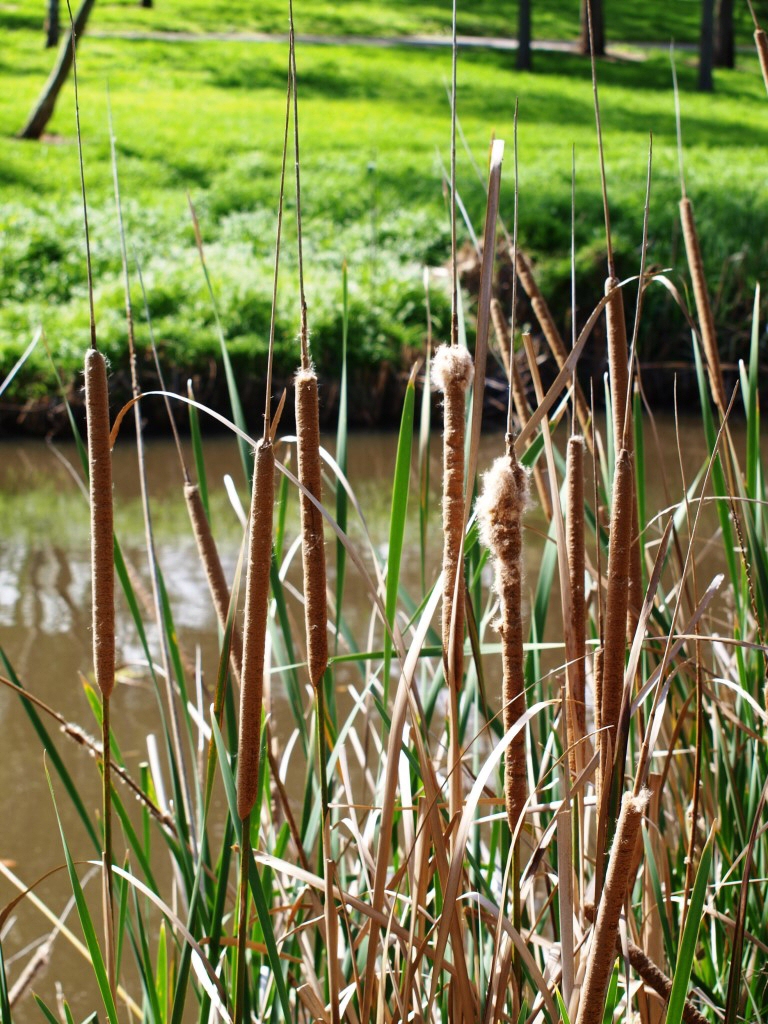This common species is found in eastern and northern Australia and in Asia. It grows in bodies of water and in boggy areas, and grows from rhizomes. It is considered a weed in some parts of Australia. Produces both male and female flowers, the latter being the familiar brown velvety area on the Cumbungi. The plant is traditionally an Aboriginal source of food, amongst other resources it provides. The rhizomes can be roasted, new shoots eaten fresh and young flower stems steamed. The seed heads can be added to flour for baking, and contain protein. The leaves are useful for weaving into baskets, hats and mats, and all parts of the plant can be used for thatching.
Typha orientalis – Bullrush

Family : Typhaceae
Cultivar Name:
Plant Type : Clumping perennial, Aquatic
Width :
Flowering Time : Summer
Soil Type : Sandy, Clay, Loamy, Sandy loam, Clay loam, Poor soil
Climate Zone : Sub-tropical, Warm temperate
Growth Habit : Evergreen, Spreading, Column-shaped
Soil Moisture : Moist moderate drainage, Boggy poorly drained
Special Uses : Edible, Bog gardens, Fast growing
Scientific Name: Typha orientalis
Common Name : Bullrush
Height : 4.5
Flower Color : Brown
pH Level : Acid, Neutral, Alkaline
Plant Environment : Low maintenance garden
Light : Sunny, Light shade, Half shade
Lifespan : Perennial
Frost Tolerance : Tolerates light frost
Attracts Wildlife :
